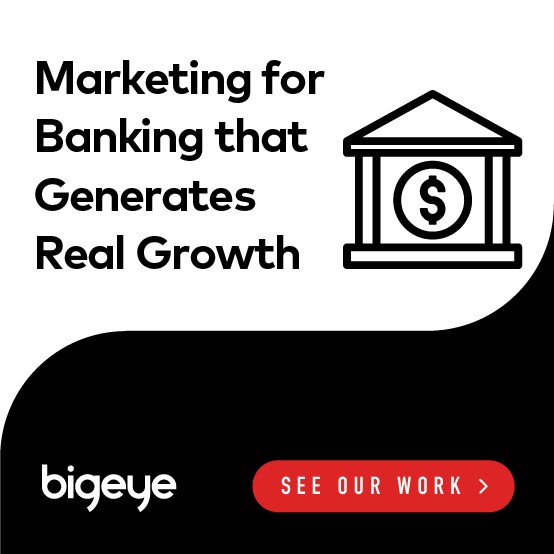If you’re not embracing environmental branding for your financial institution, you’re missing out on a key piece of the overall marketing puzzle.
Companies in the retail sector have long leveraged the power of the branded environment (incorporating an organization’s brand and the distinctive characteristics of that brand into the interior and/or exterior design of its brick-and-mortar stores). Whether it means liberally integrating the retailer’s name into physical location signage or imbuing in-store displays with the unique charm and appeal of the retailer’s brand identity, environmental branding can work wonders when it comes to driving customer loyalty and on-site sales.
The banking industry, however, has traditionally lagged far behind top retailers when it comes to leveraging the power of branded environments. This makes perfect sense considering the history of banks in the United States and elsewhere. In most communities, there was only one bank in operation. Effective branding and marketing operations in general were completely unnecessary. Customers banked with a specific organization because it was their only option, not because they preferred it over any available alternatives.

Now increasingly savvy about branding practices, the financial institutions of today are finally beginning to reverse this trend, realizing that effective branding is absolutely essential if they want to get a leg up on the competition in the modern marketplace. The creation and maintenance of branded environments should be an absolutely essential component of any banking organization’s greater marketing efforts.
If you are looking for ways to develop effective branded environments for your bank location(s), you will want to employ a marketing agency with the established expertise to address the specific wants and needs of your particular institution. The following four guidelines can get you headed in the right direction.
1. Concentrate on relationship building in the lobby area
When it comes to building a new bank branch or remodeling an existing bank location, the design masterminds at HTG Architects suggest rethinking the fundamental purpose of your lobby area. As HTG puts it, “Co-branding can change your space from “transaction-based” to “relationship-based.” And in today’s banking world, this shift can make all the difference.”
In addition to incorporating ample on-brand elements into your lobby, HTG suggests reducing the size of banking transaction areas if it can make lobby space feel more comfortable and inviting.

2. Reflect evolving technology
Different banking organizations will inevitably target different consumer demographics, but the vast majority of todays’ customer base will respond favorably to technological innovation. This is particularly true of consumers in the modern banking sector, who tend to expect the companies with which they partner to be on the cutting edge in terms of state-of-the-art financial operations and security measures.
In order to reinforce strong technological ties, the physical design of brick-and-mortar bank branches must reflect high-tech engagement in a variety of ways. This might mean the inclusion of advanced ATM machines and smart kiosks or it might mean simply crafting on-site sign imagery and typography that is compatible with technological themes.
3. Emphasize convenience and public responsibility
Smart financial institutions will also design their buildings to not only deliver optimum customer convenience, but reinforce their commitment to public service through effective on-site messaging. Two great examples of this emphasis on respect and responsibility are ADA compliance and environmental sustainability.
All bank locations should go far beyond the mandated regulations of the Americans with Disabilities Act (ADA) to ensure that all customers have equal access to banking processes regardless of physical or mental disability. Furthermore, bank locations should offer the latest in recycling amenities, responsible resourcing, paperless technology, and other green modalities. Remember, your physical location speaks volumes about your company’s priorities and values.
4. Consider environmental co-branding
If you really want to boost consumer convenience while engendering considerable lobby cross-traffic, you may want to look into partnering with a well-known brand from another business sector and welcoming that partner into the physical space of your bank branch(es). While traditional environmental co-branding partnerships in the banking sector have included insurance agencies, accountants, and title companies, more and more banks are incorporating comfort-inducing retail organizations such as coffee shops into their lobby areas.
For more information
To guide them through the considerable intricacies of the environmental branding process, wise companies seek out the assistance of highly trained and specialized marketing professionals. An environmental branding agency that is both forward-thinking and rooted in current best practices, Bigeye can answer any questions that you might have about your bank’s practical environmental branding options.



